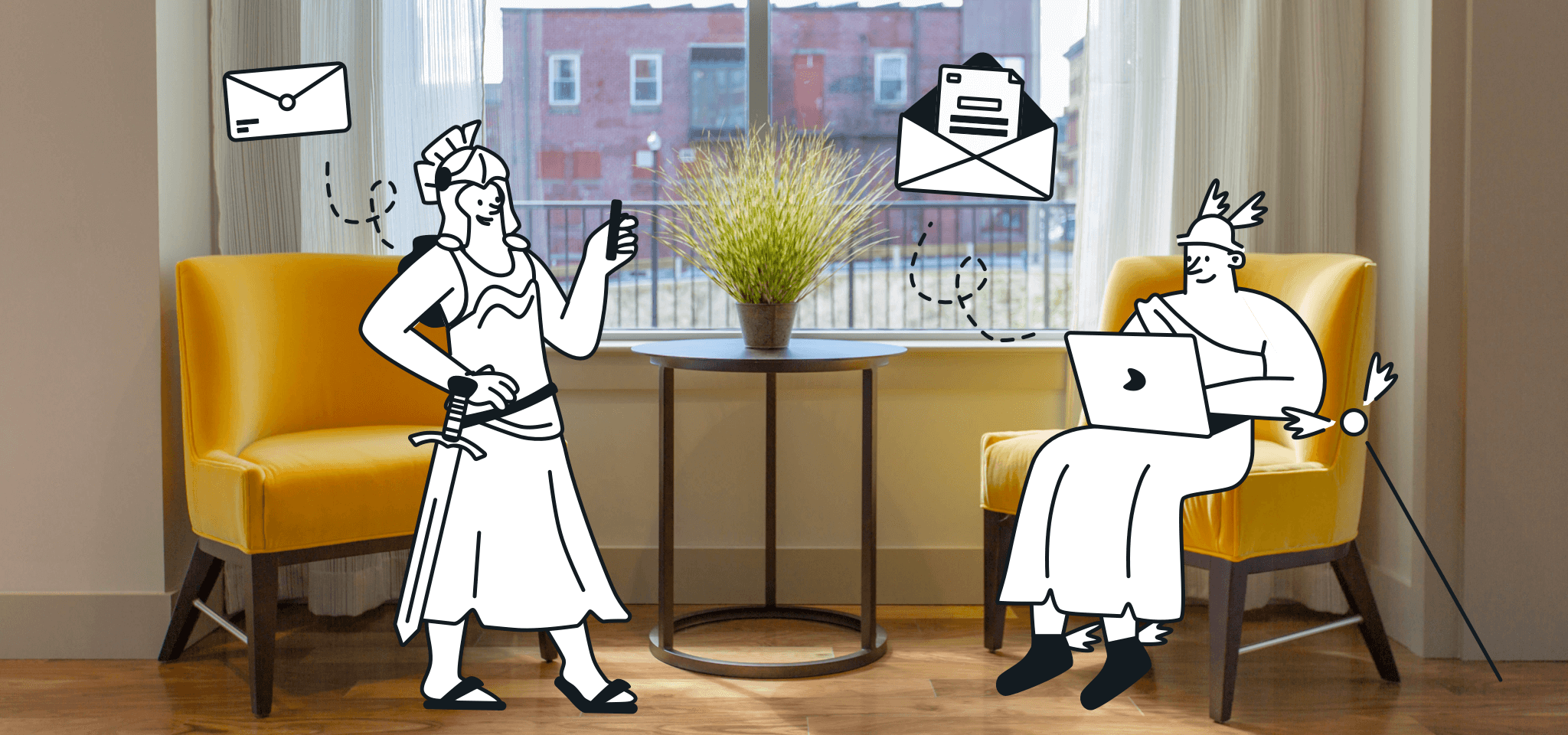Email best practices
Key takeaways from Sinch Mailjet’s The path to email engagement 2024
No matter what your marketing metrics look like, there’s always room to improve email engagement. Discover key findings from our global survey of more than 2,000 consumers to help you develop an email strategy that drives results.

PUBLISHED ON
Increasing engagement is like the holy grail of email marketing. How many times have you launched a campaign you thought would generate tons of clicks and conversions only to have it fall flat?
Maybe you’ve even said to yourself, “What is it these people want from us?” Here at Sinch Mailjet, we decided to ask consumers how they use email as well as what gets them to opt-in, open, and engage with what’s delivered to their inboxes.
You can explore the findings in our new report The path to email engagement 2024, which features results from a survey of more than 2,000 consumers from five countries.
It’s true that your industry, brand, and target audience are unique, and every list of contacts responds differently. But this big picture perspective gives you a place to begin making a better plan. So, let’s start looking at some key findings from the research.
Table of contents
Good news and bad news on email engagement
We’ll give you the good news first. Consumers around the world want to hear from brands via email. In fact, it is by far the most preferred channel for brand communications. That goes for both promotional and transactional messages.
75.4% of consumers in the U.S., UK, France, Germany, and Spain chose email as a preferred channel for receiving promotions from brands. Plus, 74% also chose email as a preferred channel for transactional communication. So, the next time someone tries to tell you that “email is dead,” tell them they’re dead wrong.

This does not mean other channels shouldn’t be part of your marketing mix. It does show, however, that consumers expect to hear from brands in their email inboxes. And why wouldn’t they? All sorts of businesses have used email to connect with customers for decades.
Unfortunately, that’s part of the problem: Everyone uses email. The challenge for marketers is standing out and getting good email engagement in crowded inboxes full of messages from other brands.
When we asked survey participants to self-report the number of emails they receive, 73% estimated they get more than 10 on a typical day. More than a quarter (26.6%) said they get between 21 and 50 emails every day while 11% get even more than that.
Here comes the bad news... Nearly half of consumers (49.2%) told us they only open a few emails from brands per day and 8% said they wouldn’t open any at all. This is why email engagement matters, and marketers have their work cut out for them.
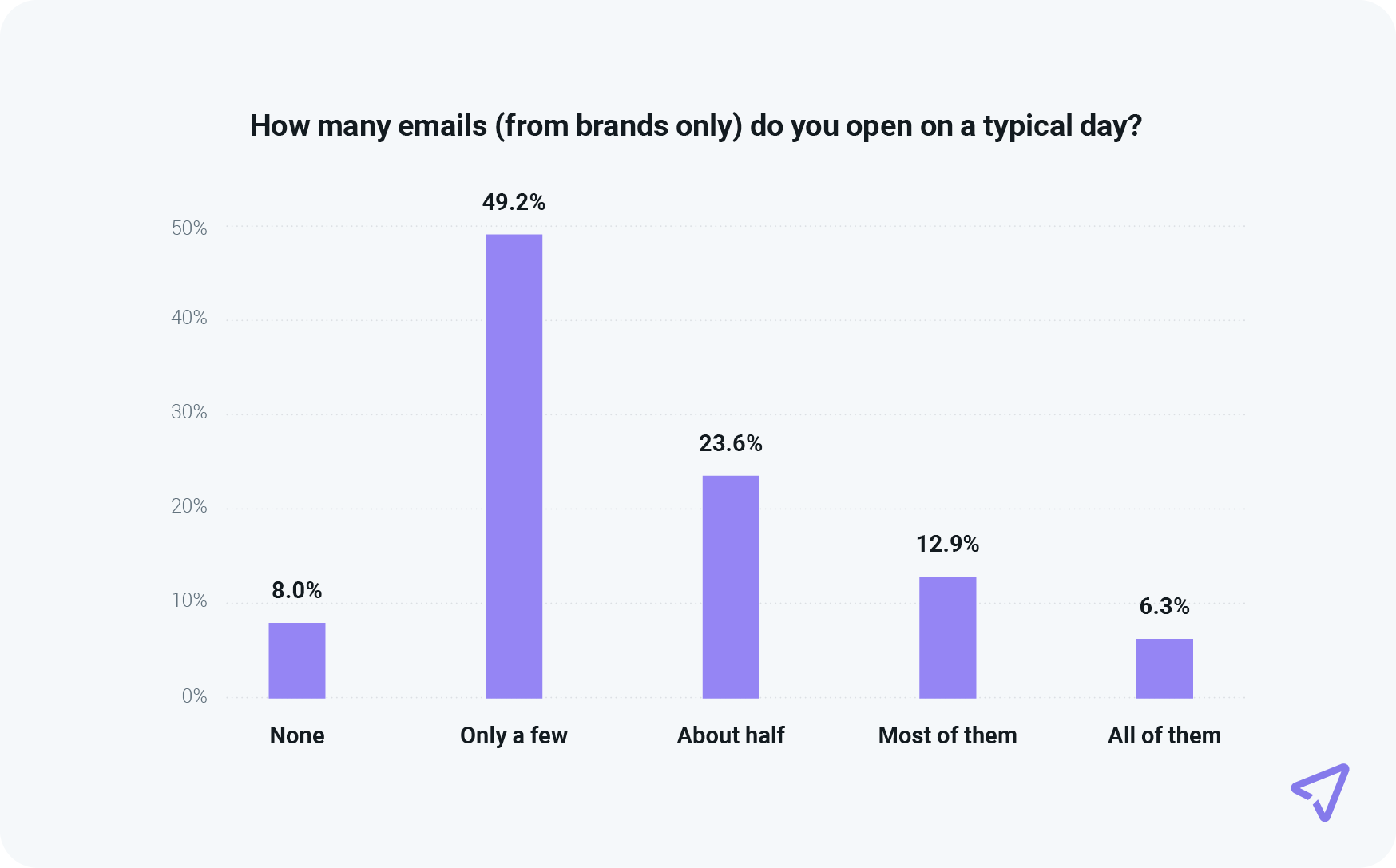
In the full report, we examine daily habits connected to the inbox as well as key touchpoints in the relationship between consumers and email senders. Let’s check out some of the top takeaways to help you get on the path to better email engagement in 2024.
Why do consumers subscribe?
Unless you plan on spamming people with unsolicited emails (which you definitely shouldn't), it all starts with convincing consumers to sign up for your marketing emails. Consumers in our survey made it clear that the primary reason they subscribe is because they want to consume what you’re selling.
The top three reasons for signing up for a brand’s emails were To regularly receive special offers (32.7%), To get a one-time discount (23.6%), and To hear about the latest updates (15%).
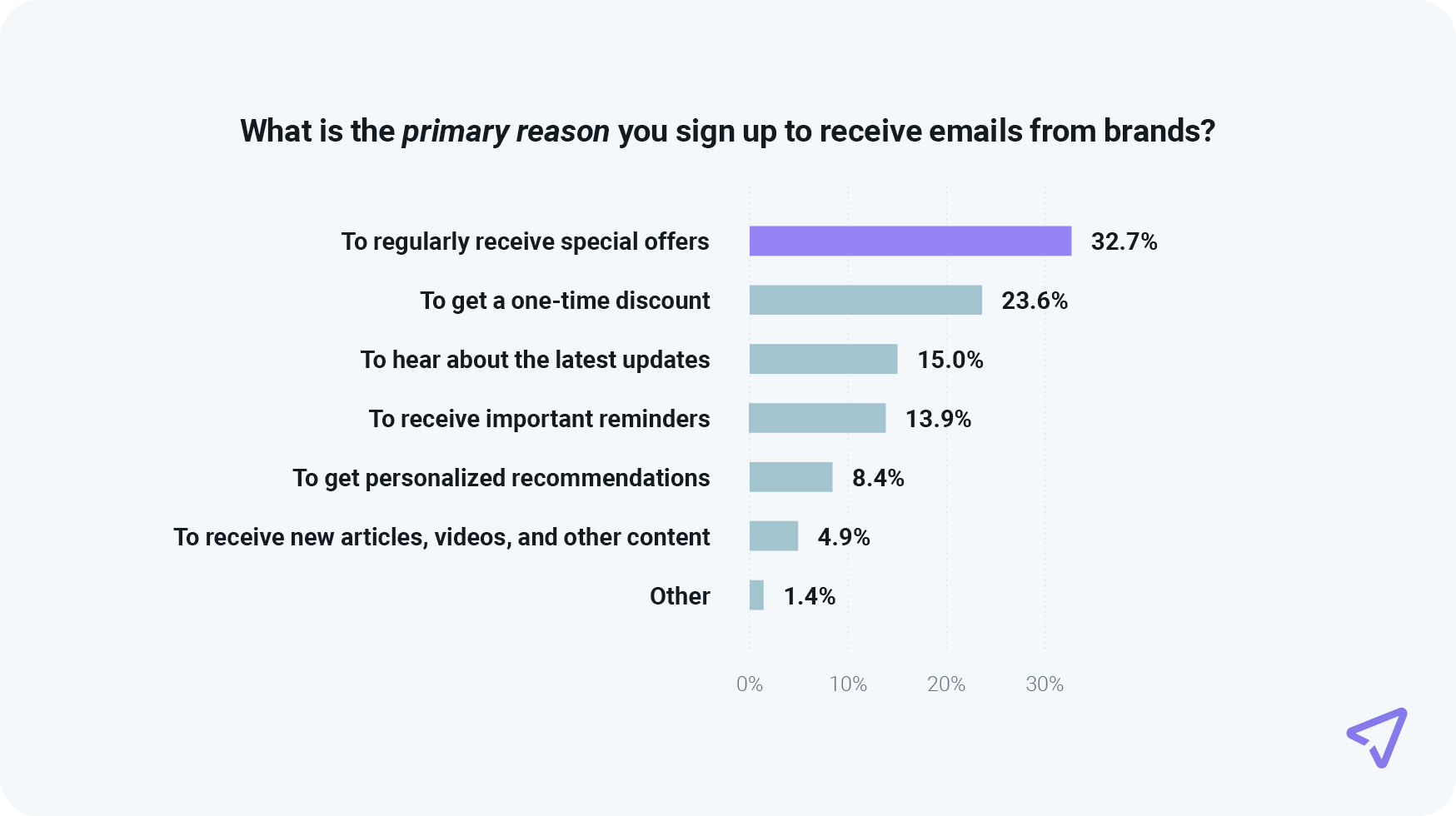
All three of these options show an interest in what you provide to your customers. However, they also imply different levels of engagement:
Someone who wants to hear about updates may be curious about your products and services, but not quite ready to buy.
Someone who wants a one-time discount could make an initial purchase and that’s it. They may stop engaging with your emails after that.
Someone who wants to regularly receive special offers is inviting you into their inbox on a consistent basis. They’re the most likely to stay engaged with your email campaigns.
There’s value in getting people to opt-in for emails no matter what the reason. The trick is understanding how to communicate with these different groups. Consider segmenting your list based on engagement, sending more often to those who are highly engaged. That’s also where an email preference center is useful. It lets subscribers tell you how often they want to hear from you and why.
Watch an on-demand presentation of Mailjet’s Email Academy for some advice on growing your email list the right way.
Where do consumers open emails?
Understanding the ways people access email in their daily lives helps marketers optimize their strategy and deliver the ideal inbox experience. In the full report, we explore a wide variety of consumer habits connected to email, including device preferences and top mailbox providers.
When it comes to the services people prefer using to receive email, there’s a very clear winner. More than 72% of respondents said they have a Gmail account. That’s followed by just over one-third who are using Outlook and more than 20% using Yahoo Mail.

There are more than 1.8 billion Gmail users around the world. So, this finding comes as no big surprise, but it underscores the importance of achieving good email deliverability with top mailbox providers.
Gmail and Yahoo have new sender guidelines for 2024. They include a one-click unsubscribe process so people can easily opt out, a specific threshold for spam complaints, and a requirement to use email authentication. Fail to follow these new requirements and you may not reach consumers using Gmail and Yahoo.
Questions about where consumers view emails also include the devices they use. Our research shows more than 71% of people are checking email on a mobile device. Only around a quarter of consumers say they check their inbox on a computer, whether that’s a desktop application for email or webmail in a browser.

The takeaway here is that responsive, mobile-friendly B2C email campaigns are an absolute necessity. If your messages are hard to read on mobile, or your CTAs are tough to click, email engagement will certainly suffer. What you send should look great on any screen.
Check out Sinch Mailjet’s guide to creating responsive emails for some solid advice. If you’re already using our platform, you can take advantage of the responsive Email Editor as well as mobile-friendly templates.
Why do consumers open emails?
Of course, boosting email open rates has a lot to do with writing good subject lines, but our research reveals there’s more to it than that. When every other brand is boasting about buy one, get one free (BOGO) sales and sticking emojis in subject lines, what can you do to be different?
Email personalization is one way to stand out, but what gets personalized can make a big difference.
We asked survey participants to rate the importance of several factors commonly used to increase open rates. Compared to all the options, putting a first name in the subject line was seen as the least important.
A combined 38.8% of consumers said seeing their names in the subject line was not important or they didn’t care at all. It seems that type of email personalization isn’t impressing these folks much anymore.
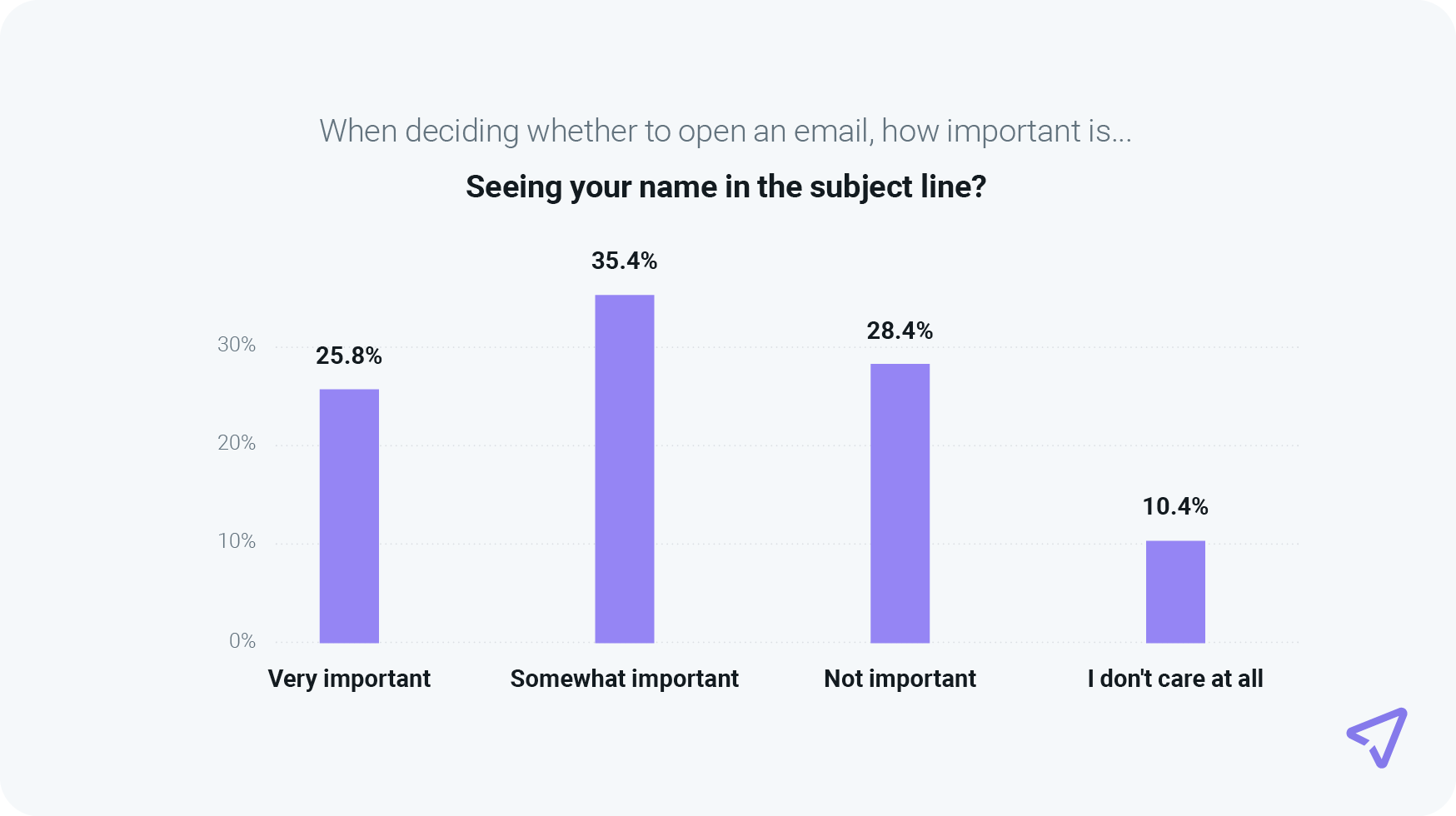
On the other hand, consumers indicated one of the more effective tactics to get them to open emails is sending campaigns that are personalized in meaningful ways. A combined 80.8% of survey respondents said personalized email content is important when deciding whether to open an email.
That could mean you’re recommending products based on past purchases, or you’re sending them helpful content based on their interests. You can make your emails more relevant to groups through segmentation or by delivering email content that uses zero- and first-party data for a truly personalized inbox experience.
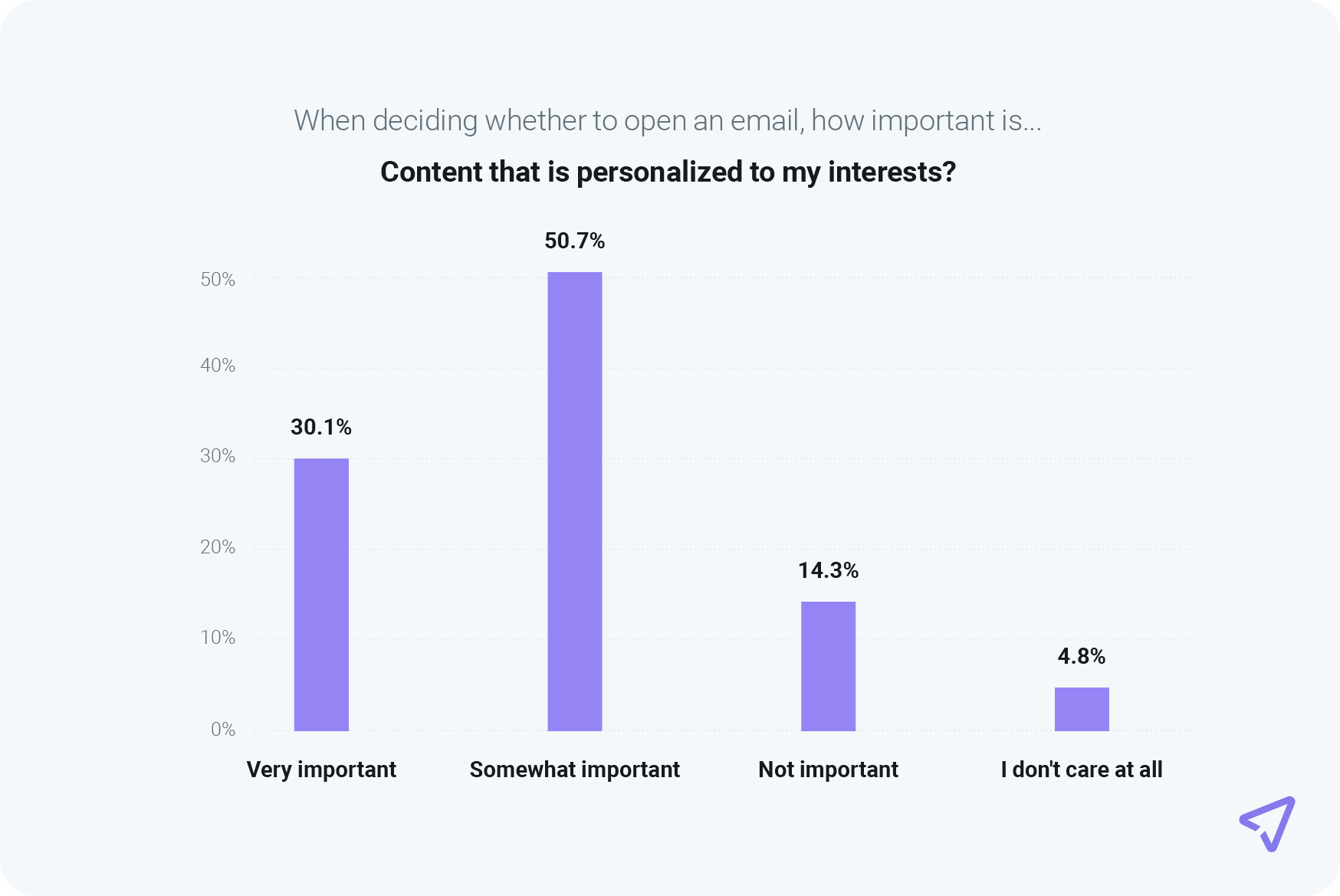
Find out more about using the power of personalization to spark better email engagement. Sinch Mailjet customers can also take advantage of our intuitive email personalization and segmentation features.
What makes consumers click?
You’ve convinced people to open your email, but your job is far from finished. Now you’ve got to get them to act on your calls to action (CTAs).
Our survey participants could select up to three reasons why they are likely to click through from an email to visit a brand’s website. Here are the three most popular options:
To claim a deal or use a coupon code (45.7%)
To learn more about an offer or topic (36.3%)
To view featured products (28.2%)
Just as the promise of a good deal is the most common reason for signing up for emails, taking advantage of special promotions also prompts people to click.

The obvious challenge is that inboxes are full of emails with special offers from brands. To get better email engagement, you need to generate some excitement and curiosity around the promotion or the product. Wanting to find out more or see it for themselves is what makes consumers feel compelled to click on your emails.
Email copywriting matters too. Mailjet’s own Julia Ritter showcased some of her creative CTA copywriting when she gave Sinch Email on Acid readers advice on increasing clicks. And don’t forget the importance of A/B testing everything from subject lines to offers. That’s essential to continuously improving email engagement.
Why do consumers unsubscribe?
Eventually, it’s the end of the road for your relationship with some email subscribers. There’s nothing wrong with getting unsubscribes. In fact, letting people go who are no longer interested will increase email engagement rates. But if you can keep consumers engaged, you should.
Just like in many relationships, your email contacts may unsubscribe because they need some space (in their inbox at least). Our survey found almost 20% of people commonly unsubscribe because a brand is sending them too many emails, making it the top reason. Not far behind, almost 18% unsubscribe because they’re no longer interested, and just over 17% do so because the email content is irrelevant.

There are plenty of legitimate reasons someone may lose interest in your emails. They could be at a different stage in life, for example, and what you offer is no longer needed. Just don’t let being boring or irrelevant become the reason people unsubscribe.
When people are ready to unsubscribe, it should be easy to do. That’s why Gmail and Yahoo now require that bulk senders include a one-click unsubscribe link in the header of emails. It’s hard to watch subscribers leave your list. But remember – getting marked as spam is much worse for your sender reputation.
Making room for multi-channel communications
Even though it’s clear that consumers prefer email for brand communications, as a marketer you know the digital landscape is always evolving. Preferences shift and new opportunities emerge. You need to be ready.
In the report, you’ll see that consumers are warming up to the idea of hearing from brands through text messaging. In some cases, people are open to receiving both email and SMS messages from companies they do business with. While many consumers are already accustomed to transactional SMS, the concept of getting promotions via text is also gaining momentum.
While it’s true that 36% of consumers in our survey claimed they never want to get text promotions, that leaves 64% who are open to receiving promotional SMS at least once per month.

Another opportunity that should be on your radar is Rich Communication Services (RCS). These interactive messages can deliver personalized, conversational experiences to consumers. See an example of an RCS campaign in action below. Now that’s what we call engaging content.
Getting consumers to engage with your emails isn’t going to get any easier, and inboxes aren’t getting any less cluttered. That’s one reason why it’s smart to diversify your marketing mix with other channels. Because they are new and novel, it could be a little easier to grab consumers’ attention... at least for now. Marketers need to use these channels for good not evil or consumers will eventually ignore them.
Go further down the path to email engagement
We’ve given you plenty to think about with this selection of key takeaways from our survey. But there’s more to explore in the full report.
You’ll discover findings about when and how often consumers check email, learn about the impact deliverability has on engagement, where consumers get value from email, and what a recognizable brand has to do with better open rates. Plus, you'll get actionable advice and lots of recommended resources for email marketers.
If you’re searching for an email service provider (ESP) with solutions to support your quest for better email engagement, give Sinch Mailjet a try. You can start for free, check things out for yourself, and grow when you’re ready.



